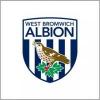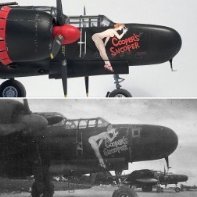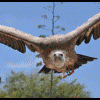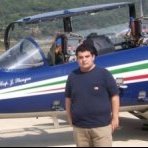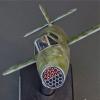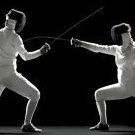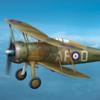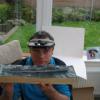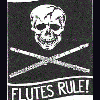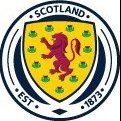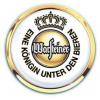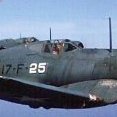Leaderboard
Popular Content
Showing content with the highest reputation on 13/04/20 in all areas
-
Here are the photos of my Airfix 1/72 Lancaster that I just finished. The build thread is here: Lancaster W4308 UV-C made a crash landing just outside the village where I grew up in January 1943. The wreck was stored for a while on a little parking lot just behind the house that I grew up in. The pilot, Squadron Leader Osborn, tells the story: "This was our sixth trip flying Lancasters. The target was Dusseldorf on the western edge of the Ruhr industrial area of Germany. I was on my second tour of operations with a total of forty-seven trips completed over a couple of years. Our normal plane, ‘J Johnny’ was declared unserviceable and we were allotted ‘C Charlie’ (Lancaster W 4308) normally flown by another crew that happened not to be flying that week. We were told that the target-area would be completely covered with cloud, but that our attack was to be guided with great accuracy by a new guidance system just being introduced into Bomber Command, called by the code-name of ‘Oboe’. As a veteran I had never heard the likes of such a method before. Like many others, I felt sceptical about the soundness of the theory. As the wintry afternoon in Breighton, South Yorkshire, where we were based, faded into night, we took off and slowly climbed up and up, flying round and round over base, to reach the required height before setting course for Mablethorpe. We were briefed that a cone of three searchlights would be switched on for a short period but we failed to see the lights. I think that our first mistake of the night occurred right here, and that we set course from base too late to reach that cone of light before they went out. We pressed on, hoping to catch up with our schedule by the time we should reach the target — we failed to see any marker- flares there, but nevertheless received the sort of welcome from the flak below that clearly indicated that we were somewhere over the Ruhr area. With no aiming point visible because of thick cloud below, we dropped our bombs on ETA (it was a standing order by this time of the war that no bombs were to be brought back from Germany.) We set course for home, and I remember that a bit later, around 9.00 pm and probably flying at about 12, 000 feet, we thought that we had crossed the Dutch coast at Noordwijk on the official track as prescribed, and so we thought that we were over the North Sea. I recall that I had even begun to think of bacon and eggs, when Longworth (our Navigator) told me that a signal had just come in from Group ordering us to divert to Bradwell Bay (an aerodrome in South Essex) due to our base being now fog-bound. The Navigator had not even given me a new course to steer when suddenly we were raked by cannon-fire from below. There were flashes and bangs in the cockpit; an almighty thump on my left upper arm and my hand disappeared from the wheel but I felt no pain; a deafening roaring noise filled the cockpit (the roar of the slip-stream in the gaping holes along the belly of our plane I believed it to be); the main petrol-tank between the two starboard engines was ablaze, and a sheet of flames streamed back towards the tail-plane. I tried to will my seemingly non-existent hand to get back up on the wheel once more, but nothing would come — I could feel my fingers touching some piece of equipment down beside my seat. I knew that I had been wounded — not for the first time for me, as I had been hit once before when a Dornier intruder had bombed our dispersal area at Newmarket Heath back in 1941 and my left foot had been hit by a bomb splinter. I tried to speak on the intercom but it was dead. I presumed that the shot that had hit my arm had also shot away the intercom plug down beside me, cutting me off from the rest of the crew. I must have been badly shocked by the suddenness of it all, as it was some moments before I realised that I had not even taken evasive action. However my mind had been racing: we were out over the mid-winter North Sea, we were diverted to some strange airfield perhaps an hour’s flying time away, we were on fire in the main starboard petrol tank, I was badly wounded, my intercom was gone, and there were was goodness knows what other damage elsewhere to the plane. I could not tell anyone what I thought it best for me to do, but I just knew that I had better get on and do it quickly. Just to show that I was correct in this at the very moment that I decided to turn back and crash-land in Holland, our not-so-friendly companion below gave us a hurry-up with a second burst from his guns. I didn’t know what damage this further shooting did, nor do I have any idea just how long it was between the first and the second attacks. All realisation of how much time was passing just seems to have escaped me — but I now estimate that our attacker would have needed far less than one minute to realise that he had the opportunity for another shot at us, for him then to regain a favourable position for this second attack, and so to do his stuff once again. At the very instant that we were attacked again, I had banked and dived away to the left, intending that we should fly back towards the east, in from the North Sea and so back over land once again. After turning for what seemed to be only a moment, I straightened out and let the faithful old Lanc dive herself quickly down — she flew easily, even with only one hand. I was flying by instinct now, by the seat of my pants and not on instruments, so I had no knowledge of how fast we were diving nor in what direction we were flying when I finally levelled off — generally eastwards was my intention. A short while after I levelled off I became aware of the ground looming up close below us. I let go of the control-column for a moment, clasping it between my knees, and cut the engine throttles. We skimmed along low over the ground, wheels still up of course, but with no flaps down as I already had enough to do without trying to lower these with my one hand as well. I had no idea if anything might be rearing up in front of us, but was busy watching the blades of grass as they flashed past my side-window, lit up by the fire in our starboard wing. A few moments later we slithered to a halt like a piece of wet fish landing on the slab in the fish-shop. We pilots had a saying among us that any landing that you could walk away from had to be a ‘good landing’ — in this case, ours was a very ‘good landing’, one that we really did have to walk away from! I thought that the best thing that I could do to save my crew was not to attempt to fly back to England, but to try to crash land somewhere just behind us — in the Netherlands, flat open country as I imagined it to be. I managed to do just this (and landed my plane close to a village called Warns), with a farm house only a few hundred metres off to the side of our blazing wreck. Five of our crew of seven got out of the plane, with our mid-upper gunner and myself being wounded, and two others not being found amongst us survivors — the front gunner had dropped out using his parachute but was unfortunately he was too low to the ground to survive this drop, whilst the rear gunner was dead in his turret. In a few moments we were joined by a middle-aged man, together with his son and daughter — dairy farmers I believed them to be. They took us into their house, making us as comfortable as possible, even giving us a glass of wine, while someone got in touch with the local doctor who came to bind up the wounds of us two. A little later , our three fit survivors said that they thought that they ought to try to escape, and I of course agreed. They had only just got to the back door, being shown the way by the son of the family, when a party of seven Germans stormed into the house, and we were all taken prisoner. A little later an ambulance came, and took us two wounded and the doctor to Leeuwarden, a city in the north of Friesland, and to the big hospital there where the Germans had commandeered one wing of the hospital for their own use. The Dutch doctor stopped the ambulance once while we were on the journey so that he could make sure that we two were OK. While we were in hospital, for about three months, we were visited by the hospital plumber who had come to clear a blockage in the wash-basin close to my head. While he worked he spoke softly to me in German, telling me about the fall of Stalingrad (where the Germans had just lost about two hundred thousand men as prisoners). The plumber also asked us for our names so that he could send these back to England, by some secret radio I presume — I do not know how this happened, but my parents learned that I was a prisoner of war, wounded, only about three weeks after I went missing — this news had come via the Red Cross, but it could first have been told to the Red Cross by this plumber. The dairy farmers on whose farm we had landed were called the De Boers, and their son was called Meindert, and the young daughter was Maria. Meindert was very upset that our three would-be escapers had not succeeded, and later in the war he took onto his separate farm five airmen from a Halifax that had crashed nearby, and sheltered them from October 1944 until the war ended in May 1945. Maria too was worried about us two wounded, and one day she persuaded a friend to come with her to Leeuwarden to enquire at the hospital about us — they were immediately seized by the German SD (Sicherheitdienst or security police) and were given a hard time for several hours before being released. The Germans ordered the inhabitants of the village of Warns to dismantle the wreck of our plane and to dump the remains on some open ground close to the village church — they guarded the plane while it was out in the fields, but never while the pieces lay by the church. The villages of course helped themselves to this and that, with farmer De Boer keeping the aircraft ladder for use in his barn, while the rear entry door of the Lancaster became the door to his pig sty. Mrs De Vries Jagersma took a fire extinguisher to the local blacksmith, who removed the spray fittings and gave her a simple screw top to the flask below. She use this flask as the hot-water bottle for the cot of her first baby shortly to be born, and subsequently for the nine other babies that followed in due course." The cockpit was detailed with parts from Eduard, spare bits, and some scratchbuilt items: I based the colours of the landing gear of the photos of G-George, a contemporary of C-Charlie. I added fuel tanks to the wings: Turrets with resin barrels and other improved details: Flaps from Eduard: It took weeks to rivet the whole thing with Archer rivet decals: Getting ready for final assembly. The bomb bay doors fit terribly and almost ruined the entire model! And finished! Apart from the Archer rivet decals, I'd also like to mention that I painted the model mostly with Mig Ammo water-based acrylics. This paint gets a bad rep in certain circles but I'm really beginning to like them. Not only do they not make your house smell like a chemical factory (even with a spray booth), the paint doesn't eat itself when you cover one layer with another slightly too thickly. Having said this, they are a little bit trickier to spray than Tamiya, Gunze, or especially MRP. They are a lot more fickle and I'm beginning to think that advice on how to use them best depends a lot on the local climate (temperature, humidity etc). One thing that I will share though - and this works for me here in The Netherlands - is to thin Mig paints with Hataka thinner. In my experience it makes this paint spray much, much better than with any other thinner (especially their own brand). I didn't get along with Hataka paints, but thinning Mig paints with Hataka's thinner works like magic: the Mig paints go on almost as smoothly as Tamiya or Gunze. I also don't like Mig's pre made RAF colours so I mixed my own: Dark Earth is 3 parts 0021 Russian Tan and 1 part 232 RLM70; Dark Green is a 50-50 mix of 915 ("Dark Green") and 253 RLM74 and the night black is a 50-50 mix of 0032 Satin Black and 227 Sea Blue. Anyway, more photos! The mk.I compared to the mk.II I built in 2004 - painted with Tamiya acrylics. Thanks for looking - and as always comments & feedback is very welcome37 points
-
Finished at last (well, 99.9% of it). The vintage 1/72 Airfix Heron kit, updated with my own resin conversion components, namely replacement engines, props, undercarriage, flaps, interior seating etc. Full In-Progress build is here, in the link:37 points
-
I've recently completed the conversion of an AMT KC-135 into an RAF Airseeker/Rivet Joint. I used the Combat Conversions resin set which provides new CFM-56 engines, new nose, cheek blisters and the various aerials and sensors that adorn the aircraft. The decals were from the Hannants' Xtradecal range. Paints were a mixture of Revell and Xtracolour enamels. Regards, Rob34 points
-
G’day all. I’ve just completed the Airfix Phantom FGR.2 this afternoon (Easter Monday). An annoying start followed by a pleasant build for the most part, I’m happy to say that this was an enjoyable project. The kit is built as XV466 ‘D’ Desperation while assigned to 1435 flight at RAF Mount Pleasant in 1991. The most annoying issues with the kit are the fit of the lower wing to the underside of the intake trunks and the fir of the forward canopy section to the nose fuselage. Some judicious plastic removal and fettling had the parts slip into place. Gaps were addressed with the tried and tested recipe of CA glue and talc. The Skyflash (Sparrows) and Sidewinders are courtesy of Eduard but the rest of it is what you get in the packet. The kit ordnance have fins that are a scale 6 inches wide so this was a must. The yellow seeker head covers on the Sidewinders add some colour to an otherwise muted colour scheme. I’m frustrated that Airfix still persist with panel lines that really are suited on a 32nd or 24th scale kit. Here in Australia you pay anywhere between $50 - $65 for this kit (25-33 pounds). Comparing kits of similar size and cost you get panel lines that are much more refined. Airfix, if you’re listening, please get your act together in this area. There has been much discussion about it. On the plus side, the kit decals were fantastic and reacted well to the Microset/sol combo. Painting is always the fun part for me. On the kit I used Mr Color lacquers for the camo greys and Alclad for the metal exhaust areas. Looking at photos of period jets and particularly XV466, the greys seemed to lighten over time, almost to the point of almost no contrast between the two topside greys. A variety of weathering products have been used for panel lines and such. You can make out the two tones of greys in the overhead shots. Anyway, on with the photos. Let me know what you think. Cheers, Mick.31 points
-
Another build finally completed ... I started this as part of the D-Day GB last year ... then work , life etc took over !! , but now its complete, it joins my 1/72nd collection of USAF aircraft based in Essex during WW2 , As with every kit, its a learning curve and a relaxing hobby, constructive comments always welcome One day I will build a photo booth / base to make pictures more interesting !! Aircraft s/n 43-10208 5D-S : ‘ Es for Sugar’. 644th Bomb Squadron part of 410th Bomb Group based at RAF Gosfield (near Braintree) with secondary runway at RAF Birch27 points
-
I completed this huge model a few months ago - it's the stunning HK Models 1/32nd Lancaster combined with Iconic Air's Dambuster Conversion. The conversion set provides the modified bomb bay set up, the bomb itself, as well as a decal sheet for the 617 Squadron aircraft. I have chosen Maltby's aircraft, coded AJ-J. Paints were from Hannants' Xtracolour range of enamels. Regards, Rob27 points
-
Hiya Folks, We`ve all heard of Lend Lease but many people are unaware that it went the other way too with US Forces being equipped with British equipment and one aircraft types that the 8th AF based in the UK made use of was the DH. Mosquito which was used as a reconnaissance aircraft, Master Bomber, Weather Reconnaissance and a chaff dropper which preceded the main heavy bomber formations,... as well as for Special Forces `Red Stocking' missions too, for which they had gloss black painted undersides (another cool scheme I intend to model some day!). The 35th Bomb Group (R) at RAF Watton was the main user and the subject aircraft is MM345, a PR.XVI of the 653rd Bomb Squadron and here is the real aircraft; Here is the WIP,...... the model was built alongside a PR.35; And here is the model; Cheers, Tony26 points
-
I have just completed this Desert Stuka base a plan that was in Libya in 1941. I first saw it in a profile in the Topwings 54 Ju 87B book by Maciej Noszczak. The profile was painted by Arkadiusz Wrobel Then when I had almost finished it I found this image of it crashed on takeoff. So I used the Airfix 1/48 kit and put together the decals from several sources. The model isn't prefect by any means. I had a lot of trouble with Airfix's open canopy parts. Also the plastic for these clear parts are rather soft, so the old toothpick method of removing paint from them literally dug into the plastic. Aside from that I'm quite happy with the model. I used oils to get a sun bleached look and a variation of the paint surface. So this is a well weathered desert Stuka. The sand colour was hand mixed and painted on a mottled black base. This helps give the illusion of the sand starting to wear down to the original dark green scheme.26 points
-
I managed to take off the tape from the engines, without also detaching the engines at the same time. Here is, as the title suggests, the Revell Airbus A380 in the new livery of Lufthansa, which, personally, I like a lot. For those who haven't seen, the WIP is here: I built the kit right out of the box, with no additions or modifications, other than some modifications to the body gear doors to close them (the instructions tell you to install the doors in the open position, which is incorrect). I had to cut out small sections to fit the oleo through. I also cut the bogies and repositioned them in the in-flight position, because I was going to be hanging the A380 from the ceiling. I'm not brave enough to cut the wings to deploy the flaps though! One final touch was to add two beacon lights at the top of the fuselage - there are clear parts for the wingtip navigation lights, but none for the tail cone or beacons on the fuselage. There is moulded beacon on the belly, but nothing on the top. For these, I dabbed very small rounded blobs of red paint with a cocktail stick, and when they were dry, dabbed very small blobs of Revell Contacta Clear on top of them to form the dome. Thanks for looking and welcome any critique.23 points
-
21 points
-
Just completed this one, not a bad kit at all..went together really well. The major letdown is with the instructions which are a bit vague at times, incorrect part number call outs and no paint or decal instructions for the weapons. Provided you have some reference material then you'll be fine. Paints are Vallejo Model air and Tamiya with the camo airbrushed freehand... altho it would have been a lot less stressful had I gone with masks! I also confess to missing a few of the tedious stencil decals off as I got bored! 😁 Anyway here she is, always loved the look of the beefed up F16s from Israel, Greece, Poland etc. Comments and tips appreciated.17 points
-
Hello all...been a while since I posted here. I was building quite a lot up until about 13 months ago, and then life, work, travel, and other hobbies took me away from the bench. I've been itching to get back to building for a few months now, so what better excuse than being stuck at home for the forseeable future?? Here are my builds over the past 4 weeks. I like building in the "What If?" genre, and over the past 10 years that has been most of my building, but in the past couple of years it's been a bit more balanced, as these four builds show...50/50 split. I'm not someone who pores over a kit for months at a time correcting every inaccuracy and making sure it is perfect. I like to build fast and build something that looks pretty good to a casual observer on the shelf, so forgive any sloppiness. 1. Hasegawa 1/48 A-4M Skyhawk built as a What If? Royal Navy FRADU Skyhawk FG.6 in full color markings for the 25th anniversary of FRADU in 1997. 2. Hasegawa 1/48 P-51D "Petie 2nd". Out-of-Box build other than Eduard fabric belts. Testors Aluminum Plate Metalizer straight from the rattle can for the NMF, Vallejo Model Air for the blue. The blue is a bit darker than Petie 2nd should wear (closer to Petie 3rd), but I wasn't in a mixing mood and it looks good to me. This was a 48 hour build. 3. Trumpeter 1/48 Hawker Sea Hawk Mk.100/101 What-If? build as a US Navy Naval Ordnance Test Station aircraft in 1958 during Bullpup missile trials. This kit had some nice features, but typical of Trumpeter it had some shortfalls too. Clearly it was meant to be built with the wings folded and speedbrakes/flaps open. I'm no Sea Hawk expert so I may be wrong but that seems an unlikely configuration...getting it to fit in a wings spread, flaps closed configuration was a bit of a chore. Added parts were a Aires MB MK.4 USN seat, Eduard seat firing handle, an old F-16 pylon/rail, and aan AGM-12 from one of Mr Hasegawa's boxes of things that should have come with a kit in the first place. Decals mostly came from a Two Bobs F-18 Centennial of Naval Aviation set. 4. Tamiya 1/48 P-38G "Miss Virginia". After the fit issues with the Trumpeter thing I needed an nice easy build since my favorite part is the paint/decal/weather phase. I got this kit from SWMBO for Christmas and I simply can't say enough good about this kit. I speak of it as though Tamiya were sending me a check. It is simply perfect. Thats it for now...as long as the storms in the southestern US don't blow us away tonight I'll be starting build number 5 tomorrow. Leaning towards more WW2. It seems to be my favorite at the moment.16 points
-
Here is P-51D, "Bad Angel". Flown by L.E. Curdes. Lt. Col. Curdes flew in the ETO and PTO. He is noted for having downed German, Italian, Japanese, and, um, an American aircraft. This model was started in the P-51/Mustang STGB, but finished just now. This is the Airfix 1/48 F-51D boxing, CAM's Thoroughbred Mustang decals, and Eduard's Brassin exhaust stack for the Airfix kit. Paint is Mr Color with Alclad for some details. Here's Wikipdeia's description of the event leading to the American kill marking. And here's a photo of Curdes and his bride, Svetlana Valeria Shostakovich Brownell. How many husbands can claim they shot their future bride out of the sky? Without further ado, here's the finished model. And here's the reason for this build, those amazing kill markings.14 points
-
I have just finished the RS Models 1/72 Airspeed Envoy, but wanted to do it as G-AEXX of the King's Flight as used by King Edward VIII between 1937-39. The RS Models kit comes is several difference boxings with different engines and the version modelled is the one with Cheetah engines, which come in resin form. The kit goes together very well with some very fine details and a full cabin interior. The very nice good quality decal sheet is for all military versions - RAF, Spanish and Republic of China Air Forces, but strangely there are no decals for the King's Flight aircraft, which is well documented. Undaunted, I had a Rugrat Resins Envoy kit in my stash, which does have these decals, so I extracted the sheet from this kit and sold the kit without decals, for which my buyer was quite happy about. The Rugrat decals are quite old and frail, which I struggled with, but here is the result that fills a gap in my Royal Flight collection.13 points
-
Well this is my second lockdown completion, which is two more than I finished in 2019! It's Karaya's lovely 1/48 Martinsyde Buzzard, finished 100% OOB. On the basis of this one being exactly the kind of kit I love (lots of resin and PE), I've purchased another Karaya kit for the stash. So this is what you get: And this is it finished: Hope you like it! Be safe out there.13 points
-
Hi all, hope you all are ok and safe... This is my first completed model during my quarantine here in Spain (started several months ago). I bought this one because of the color scheme, without knowing anything about the sprues or reviews, etc. so it was a surprise when I opened the box. Airfix did a strange thing with this product, I don't mean it's a bad thing, but at least strange. Half of the sprues are from the '70s and half are modern ones, designed for this D-Day edition... I think it had been better to design completely a new one model, if you plan to design the half of the sprues (the fuselage, and the top part of the wings, mainly). I must say that the old moulds almost haves a more crisp and fin details, except for the outside panel lines. The new parts haves modern negative panel lines, but a bit oversized. There had been some serious fitting problems, specially with the wings, and a lot of putty and sanding, and again sanding. But I think at the end it turn out nice. I must say that it had been in some points a bit painful, but in the other hand is a nice project to test my skills... I completed the model with a set of PE from Eduard designed for a Tamiya kit, and a bit of scratch, specially in the cockpit. The bad part is that behind the glass and the fuselage it will be all this work hidden. May be the thing I like more of my build is the cockpit, with all that wiring and scratch added to de PE, it had been very pleasant to do. I had follow some points on the page Scalespot.com and his beautiful Mossie in 1/32 from HKM for the references specially in the cockpit parts. Also added some scratch to the wheel bay and landing hear, because out of the box is very simple. Also rivet works by me, and I split the back control surfaces to have a more dynamic form. The decals are very hard to work with Mr Mark Setter/Softer and they are very thick... Well, I hope you like it. Thanks for take a look... Ricardo.13 points
-
13 points
-
Hi All; Here's my recently completed P-47. I was quite happy with how it turned out though I did bugger up a couple of things, and to be honest I lost my nerve in the end on going all out on the weathering. Critiques are always welcome, cheers; Mark.12 points
-
Hi...Cruelly weak model, I have a profi version plus a large set from BrenGun. As for 48, it's even weak with additions. The surface have engraved panel lines, but poor. The middle cockpit is empty. So far, I have been reveted whole model and played with the interior ..... It will be from Operation Tungsten (I think, because Asian kamo blinks seductively), the first and basically the only effective attack on Tirpitz for me.11 points
-
#11/2020 After the Fw190 with the Hagelkorn gliding bomb, my dad has finished another subject of the Special Weapons And Tactics category. Hasegawa kit (limited), added Eduard seatbelts, Antenna wire with EZ Line and fishing line, yellow fuel line in the cockpit and brake lines with plastic rods and lead wire. "Spears" of the wing tanks with plastic rods. As a G-1 the aircraft had a pressurized cockpit. Removed the side airscoop from the windshield and added a sealed canopy back wall with an Eduard part found in the sparesbox. The little airscoop on the font fuselage was a Fw190 part taken also from the sparesbox. Hasegawa didn´t provide underwing Stammkennzeichen decals, these were done with Luftwaffe code decals from Fantasy Printshop. Painted with Gunze RLM 74/75 and AK Real Color RLM76. The additional landing gear is provided as a metal part in the kit. Build thread here https://www.britmodeller.com/forums/index.php?/topic/235068490-swat148-messerschmitt-bf109g-1-fieseler-skoda-fisk-199/ In 1942 plans were made to enable the 109 to carry a large 500kg bomb. The Fieseler company designed the modifications. This consisted of the addition of a auxiliary undercarriage leg fitted under the center of the fuselage. This leg was jettisoned after take-off and was fitted with a parachute for retrieval. After the bomb was dropped the FiSk-199 could land in a normal way. The modifications were carried out by Skoda in Prague, hence the assignment of the Fi-Sk designation. It is thought that two aircraft were converted and tested. DSC_0001 by grimreaper110, auf Flickr DSC_0002 by grimreaper110, auf Flickr DSC_0003 by grimreaper110, auf Flickr DSC_0004 by grimreaper110, auf Flickr DSC_0005 by grimreaper110, auf Flickr DSC_0006 by grimreaper110, auf Flickr DSC_0007 by grimreaper110, auf Flickr DSC_0008 by grimreaper110, auf Flickr DSC_0009 by grimreaper110, auf Flickr DSC_0010 by grimreaper110, auf Flickr DSC_0011 by grimreaper110, auf Flickr DSC_0012 by grimreaper110, auf Flickr DSC_0013 by grimreaper110, auf Flickr DSC_0014 by grimreaper110, auf Flickr DSC_0015 by grimreaper110, auf Flickr DSC_0017 by grimreaper110, auf Flickr DSC_0018 by grimreaper110, auf Flickr DSC_0019 by grimreaper110, auf Flickr DSC_0021 by grimreaper110, auf Flickr DSC_0023 by grimreaper110, auf Flickr DSC_0025 by grimreaper110, auf Flickr11 points
-
Hi, I've built Mengs A7V in 1:35th scale. It depicts "Schnuck", and it belonged to Abt.2 in Northern France during autumn 1918. the model is painted using Tamiya acrylics, and weathered with Mig and AK products. Hope you enjoy :) Best regards Rune, Norway11 points
-
Good Morning and Happy Easter to all Grumman (F6F-3) Hellcat Mk.I 800 SQN FAA Aboard the escort carrier HMS Emperor in July 1944 - Operation Dragoon Eduard 1/48 Built for "in the Navy" GB11 points
-
Thanks Simon, you and Lady Rose too Thanks Marklo Cheers Keith - anti-static wristbands? They sound shocking Small bag shortage eh? Time to panic buy??!! Thanks Giorgio Actually, with the internals fitted (watch all that PE - and the control stick!) the joins aren't bad: That seat and i/p are from the other one, now also glued. We'll see what they're dry.11 points
-
Jet Provost T.3 1:72 Airfix As a former JP T.3 student once said to me, it had 'Fixed thrust with variable noise!' This is the new tool 1:72nd Airfix kit, and very nice it is too. The fit is superb and it is a very easy build. The decals were not so easy though, there is an extensive amount of day-glo orange to fit on and the sections that wrap around the leading edge of the wings was tricky as it did not want to fold. I got there in the end, but not without it fracturing and splitting a bit, so there is a small amount of touched in paint using Revell 25. Apart from that the decals sheet is very extensive with masses of stencils. Every now and then I like to build something outside of my main interests, and the new tool Airfix kits are perfect for this. Just open the box, build it 'as it comes' with out adding aftermarket etc and just enjoy the hobby in a simple way like I did as a kid. Pure fun! (Well apart from those wing decals). Our 1/72 scale student is thinking 'If I pass this course, maybe, just maybe...' Thanks for looking John11 points
-
Hi all First boat in a long time. I had this finished OOB until I started trawling the site (pun intended) for painting inspiration and came across General Melchett's model of a few years ago. I put right what I could, so thanks to him and everyone else who contributed their knowledge in pointing out the kit's errors. The nameplate is homemade after I messed up the kit's. I'll make a proper base for it once I'm allowed out again, the piece of decking (garden variety) was all I had lying around... Thanks for looking J.A.10 points
-
Hi, mates! 🍺 I present to your attention my next finished model started about 6 years ago and finally completed due to me staying home for most of the time Well, this one took a toll on my nerves... Multiple fitting issues that plagued me to the very end! You know the drill - a LOT of filling, sanding, correcting, dry fitting again and again and still there are certain places that could look better. And finally the NMF... Oh, not to forget the blue decals on the wingtip tanks... I had to completely cut their noses off as they do not conform at all with the tanks' geometry and I mean they have nothing in common. Then I had to match the blue of the decals which was not particularly easy. On the positive side - nice photo-etched fret addressing mainly the cockpit. My general opinion is that this kit is not for the fainthearted. But still, apart from the old Heller model, this is the only option in 1/72, as far as I know. The backdrop is not period correct, yes, but better than nothing10 points
-
Just my latest kit. Nice, easy build and I had a lot of fun making it. I hope you like it. If I get the urge I'll add some figures and a few more details but for now I'm off to tackle a few more in the stash. Thanks for looking in. Dan10 points
-
Hullo chaps, I awoke at 6 AM to Mrs P shouting at Winston for waking up and methodically moving through the house, locating as many plastic eggs as he could find, extracting and eating the contents, and, since like the Huns riding out to sack Chalons in 451 AD, he is illiterate, discarding her painstakingly written rhyming clue cards enclosed along with the goodies in each egg, somewhat complicating efforts to find all of them. Eventually the situation was retrieved. Since I spent most of yesterday in blissful, relaxing slumber, Mrs P was dead set against me doing so again (fair enough, I really only spent about five hours awake between 6 AM and 6 PM), so strategically opted to take a nap of her own. Mrs P, however, doesn't like to go upstairs to our bedroom to nap (too far) or even to close and lock the door on the ground floor guest bedroom* (too much work), preferring instead to lie supine upon the bed while her small children, drawn to her like a shark to chum come in to provide her with all the aggressively clumsy boney love small children can offer, which is a lot. I don't think Winston has ever managed to climb into my lap without inadvertently(?) stomping on my groin like it's a wah-wah pedal, which in a way, it is. In any case, this is always my fault, but I'm not the one who wanted two of them, and they split up. Anyway, I eventually locked the door for Mrs P myself and threatened my children into the tandem stroller (which has lost so many accouterments in the last three years that it now looks like something out of the second Mad Max film) and set off on the two mile walk to my parents, where my desire to keep my parents from dying from COVID-19 warred with my mom's casual disregard for the very finite limits of what remains of her autoimmune system and her strong desire to hug my children, a sentiment not encumbered by knowing them like I do. Eventually Mrs P woke up and was mad at me for leaving her in the house all alone and for getting to see my mom (who she doesn't even like!) because she hasn't gotten to see anyone except delivery people and four squad cars worth of cops who busted one of our neighbours for reasons yet unknown last night. So she rode her bike out to nip at my heels in person, and we all beat a retreat before my mom was able to smother my children with kisses and thereby set out her own casket. On the plus side, on the way bag, the local army base had their M4 Sherman out, and Winston and I took a slight detour to look at it up close. Winston was suitably impressed. When we got home, Winston punched his brother straight in the face, but otherwise the day was more or less uneventful, and I finally made it down to the grotto to watch Powell and Pressburg's 1945 film I Know Where I'm Going! Raymond Chandler, who I think one of the finest writers of all time, loved this movie, as does Martin Scorsese, who I can take or leave, but it didn't really speak to me too much. Anyway, I also did some work on the Hurricanes, getting the canopies on and masked and sprayed interior green, and clear-coating the props, only to then realize I'd blundered. Bert Houle's Hurricane IIc BE643 had a white spinner, possibly with a red tip (I can't find a photo--DANGER DANGER DANGER--only colour profiles). I've painted my spinner all red. So I may have to prise it apart so I can repaint the lower half, or try and get clever (dangerous) about masking it, or just throw up my hands and do a Hurricane IIc with an all-red spinner, like The MacRobert Fighter. I welcome your suggestions. *AKA the Ced Chamber, when he visits.10 points
-
So after emptying the shelves for yeast (Norway), toilet paper (UK), marihuana (Netherland), guns & ammo (USA); the next thing to hoard are WNW kits?10 points
-
Hi there, so I had to wait a while for new decals for this kit but they arrived eventually and now it's finished. No problems with this kit (other than the decals) another nice kit from hasegawa. Time to start the next one thanks for viewing and I hope you like it Back soon 🙂9 points
-
Hi All, Happy Easter to one and all! Here is my 1:48 Airfix Supermarine Walrus, built as KF*A of No. 5 Communications Flight RAAF, based in New Guinea, 1943. Finished mostly OOB with the addition of Eduard cockpit set and harnesses, and Montex mask set. This build was notable for me for a number of reasons: 1. First Seaplane 2. First Biplane and therefore rigging attempt 3. First use of masks for insignia and national markings What could possibly go wrong?! 😬 There are not too many photos of RAAF Walrus' from this period, but here's a few (copyright Australian War Memorial): I've elected that these aircraft would have taken a hammering from the tropical sun, so have tried to simulate a faded finish. Finished in a mix of Humbrol and Mig acrylics. Despite the multitude of errors and minor niggles I'm pretty pleased with the outcome, and she has an impressive shelf presence. I enjoyed the challenge of the build, and would highly recommend the kit. Hope you enjoy it - comments and critique gratefully received as ever. Thanks for looking, Roger9 points
-
Hello, all - This C virus crises is certainly freeing up much more model time so one plus side to all the doom and gloom at present I suppose ........... Completed in three weeks and built entirely out of box. Brush painted as always and used artist oils to try and simulate the extensive caster oil staining seen in period photographs along fuselage. I have previously built a couple of years ago WNW's EII version of this kit was a complete joy to build and probably one of the easiest (once you figure out the cluttered rigging diagram) kits to put together. This particular version (representing the last and final version of the Eindecker series) is as easy apart from the cowling which is an overly tight fit over the double rotary engine - sadly because of this the engine cannot rotate with the propeller. In addition, I found the fit in area poor (obviously I could have made an error here) requiring some large gaps between cowling and cockpit decking to be filled using small strips styrene sheet to hide these gaps. I also managed to break the elevators on the single plastic tubing holding both together which is very weak point in the kit. I repaired by drilling out the tubing and elevators and adding small metal pins which have now added much greater strength in this area, Another than that, kit still goes together well. Rigged using Uschi elastic thread. Regards Dave9 points
-
The He111 has a real challenging Cockpit! Here some pictures of my 1/72 Revell/Hasegawa Heinkel He 111 Bomber which crashed from 2 m height. The Cockpit broke in to parts - now repaired. Hope you like! Instead of masking the Cockpit (which is very difficult for me) I used painted decals. Look at TOPIC "forget masking cockpits" Cheers! Andreas9 points
-
Afternoon all, I'm enjoying this bit: The very nicely molded decking has been brush painted with an uneven 'wood' colour using wet in wet Tamiya Dark Yellow/Buff/Wooden Deck Tan and was then washed with Tamiya Brown panel line accent wash. I then covered that with that with a couple of equally uneven coats of thin dark grey/brown mix, the instructions would have you use a dark grey but when I thought of waterproofed wood I immediately thought of railway sleepers so thought I'd give it a go colour wise and apparently it did weather to brown. Next was a couple of coats with Tamiya Black panel line accent wash, when that was dry, the heavy traffic areas were dragged with some sand paper to expose the wood colour below. As you can see I have also started the first pass of weathering onto the base colours: The same treatment applied the conning tower decking. Bow weathering first pass, the solvent is still drying. ....and the same around the conning tower. It really is a sweetly molded kit, the representation of the decking is excellent. Cheers, Mark.9 points
-
Here is my entry into the ongoing Nordic Group Build; Built with the addition of a correct profile nose (Questionable decision) and pitot set by Maestro models, plus an Eduard wheel set and the Neomega resin cockpit set (both very good decisions) I eventually also purchased a pre-cut splinter camouflage masking set also by maestro models. The decals were from the excellent Moose Republic Decals set. I have scratched some other details such as the speed brake actuators, thrust reverser petals and FOD guards as there is no detailing in the kit intakes. the model is weathered with an oil dot paint filter and Tamiya weathering powder. I added some further detail to the underside such as some riveting, fasteners, vents and panel lines with pencil. The model has been sealed with W&N Galleria Acrylic varnish. If I were to do it again; no replacement nose, and spend the money on a Ram Air Turbine set and dropped canard control surfaces as I now know that the model is inaccurate for an aircraft on the ground. The build thread is here: Comments and observations happily received. Cheers, Mark.8 points
-
Hello guys, here are some photos of my most recently completed model, Hasegawa's 1:72 N1K2-J Shiden.8 points
-
Hello, It has been a while without posting some of our series. I will try to catch up with it. Here is the latest series made by my father. 1) Westland Welking Mk II PF370 2) Westland Welkin Prototype DG558/G - November 1942 3) Wesltand Welkin prototype tested 200 lmp gal drop tanks. 4) Westland Welkin Mk I DX318 5) Westland Welkin Mk I DX340 carried out trials powered by two Merlin RM16SM engines with chin radiators Cheers Santiago8 points
-
Another ‘lockdown’ project completed. This time it’s Airfix’s 1/72 FW109A which is quite an easy kit to build even if some parts don’t fit properly, but then I suppose that’s modelling. It’s built straight out of the box apart from some PE seatbelts, a scratch built foot step and the two aerials under the rear fuselage. Topside aerial wires are Uschi Van Der Rosten thread with paint blobs for the insulators and I drilled out all six gun barrels and lower exhaust outlets for a better look. Paints are Tamiya acrylics and Winsor Newton oils all sealed with Humbrol clear lacquers. Any useful pointers or critique welcome. 🙃8 points
-
Hello Here's my Italeri Stirling IV, done as LJ849 QS-E of 620 Squadron, which was shot down on D-Day on its second Op of the day. It had left Fairford at 22.50 on June 5th with a complement of paratroopers on board (including actor Richard Todd), landing back at Fairford at 01.45 on D-Day itself. They then took a glider across on the afternoon of D-Day, and after releasing the glider were shot down by German flak. The pilot, Gordon Thring R.C.A.F., managed to crash-land with no major injuries to the crew. Unfortuntately they were taken prisoner after mistaking a German patrol for Americans. They were taken to a chateau by their captors, and held in a barn. The area was under heavy attack by R.A.F. Typhoons, and the Officer in charge of the Germans realised their position was hopeless. The rear gunner, Sgt. Gerry McMahon D.F.M. was wearing his medal ribbon, and the German commander assumed him to be an officer, and surrendered to him. The Stirling crew of six men marched 60-odd German troops back to the Allied lines and into Canadian hands. They returned to Fairford by June 9th, and when McMahon returned home he found his parents en route to his own requiem mass. His mother, needless to say, fainted when she saw him... The WiP can be found here: This is my second Italeri Stirling, and they've both had their moments of frustration & much cursing. This one has taken nigh on 11 months, and it's been an interesting challenge! On to the photos: Some overall views. The base is my own, with the hard standing in the style as at Fairford during WW2, made from taking measurements via Google Earth and reproducing the hard standing in Photoshop, and Woodland Scenics grass sheet. These chaps are just finishing off the D-Day stripes, watched by a couple of RN types taking it a bit easier: The standing painter is from the CMK Warsaw Pact Mechanics set 72050, with a new head, and the chap finishing off the painting is from the Preiser Painters set 10477, again with a new head from Dan Taylor Modelworks. He's at 1/87 scale, but fits in okay. The two RN chaps are from Gunthwaite Miniatures. The Matador is the Airfix gun tractor kit. I've seen a few photos of RN personnel in group photos at Fairford around D-Day. They were seconded there to gain experience in working with radial engines, but these two are just helping out with the D-day preparations. Meanwhile, around the back, there's a visit from the Paras: This Para Officer is just checking on a few details with two R.A.F. types: This R.A.F. chap is having a look at a Welbike, being shown to him by another Para: Much discussion and no doubt some shaking of heads, and I reckon the R.A.F. chap is thinking to himself something about Fred Karno's Circus... The Jeep and Tilly are Airfix, the open airborne container from the SHQ range and the figures are Dan Taylor Modelworks Paras, MMS R.A.F. figures and the Welbike is from the Waterloo 1815 WWII Paratroopers set AP036. So, all done and dusted... Simon8 points
-
Hello, this is my humble interpretation of Toyota Hilux Pickup, which is one of the most popular vehicles preferred by the militants of the civil wars in Middle East and Africa. Nice kit with good fit and quality. regards, salih8 points
-
So, time for another update, The tracks are going together very well, I'm surprised on how strong they are. They hold up really well and are probably on par with the Model Kasten tracks. The detail is very well done and the parts only require a small amount of clean up, well done Meng. One more side to get done and we are done with the running gear. They fit the Takom sprocket very well. They are very well detailed tracks, one of the best I have seen for a while. I'll give the track pads a bit of scuffing up and damage before paint. Stay safe Dan8 points
-
Airfix (Esci) 1/48 AJ-37 Viggen Here is my entry into the GB; Built with the addition of a correct profile nose (Questionable decision) and pitot set by Maestro models, plus an Eduard wheel set and the Neomega resin cockpit set (both very goo decisions) I eventually also purchased a pre-cut splinter camouflage masking set also by maestro models. The decals were from the excellent Moose Republic Decals set. I have scratched some other details such as the speed brake actuators, thrust reverser petals and FOD guards as there is no detailing in the kit intakes. the model is weathered with an oil dot paint filter and Tamiya weathering powder. I added some further detail to the underside such as some riveting, fasteners, vents and panel lines with pencil. The model has been sealed with W&N Galleria Acrylic varnish. If I were to do it again; no replacement nose, and spend the money on a Ram Air Turbine set and dropped canard control surfaces as I now know that the model is inaccurate for an aircraft on the ground. The build thread is here: Cheers, Mark.8 points
-
Thanks again for the kind words Gent's This is just a small update for and main masts have been secured and about 2/3rd of the rigging and all 24 oerlikons beefy8 points
-
Thanks Heather - very sensible. But then others always issue a challenge… Told you 🙄 Interesting article from The Grocer here. All sorts of things going on eh, including toe rags stealing eggs and chickens! More people baking/cooking at home too - even I can cook an egg. If pushed Some mojo this morning so challenges accepted! Two tiny PE levers stuck on to the gunsights. You asked for it. Lots of thoughts going through my head while I was doing that, some of them printable. Like "This was supposed to be a rest from tiny". And "All the usual rules don't apply at this level", like what sticks to what and how static can mess things up. And "I bet they get knocked off when I paint" But, as they say, in for a penny, in for a pound. The next steps are to attach the rear view mirror and canopy handle. Here they are off the PE frame: There. In front of the pick-up pencil. Madness. But they're on now: I really am going to do something bigger next build. Anyway, now that the internals are complete I can stick everything together and join up. What's the join like? Shall we call that 'interesting'? I'll work out what's stopping it being a perfect join, sand it off and report later. Lunch!8 points
-
Wonderfully fascinating aircraft, mixed propulsion. Standard piston engine connected to and drove essentially a jet engine lacking a turbine. First flew just as Germany was surrendering, too late for the war. One year after its first flight the pure jet MiG-9 overtook it, and then one more year after that the vastly superior MiG-15. Production version equipped one small squadron in the Baltic Naval units very briefly. Omega resin, done in two weeks. Modifications include: - Altered tail to make a "true" MiG-13 (as opposed to the I-250 prototypes) - scratchbuilt landing gear - Bf-109F resin exhausts - tailwheel from RPM MiG-38 points
-
Here are my two Jaguars that were worked side by side. The Revell Disbandment 'Spotty' Jaguar GR3A of 6 Sqn, XX119 from 2007 and a Hasegawa Jaguar GR3A of 41 Sqn, XZ103 from 2005 which was the display aircraft for that year. The 'Spotty' Jag was built OOB, the decals were hard work and took a lot of Micro-Sol and touching after afterwards to fill the gaps. Despite the reservations of attempting this, it's not turned out too bad. The 41 Sqn Jaguar was also built OOB apart from the correct aerial behind the cockpit and has Model Alliance decals applied. Both were painted mainly using Xtracolor and Humbrol enamels and finished with a Humbrol Satin Cote. The only difference was the tail on XZ103 which was a pearlescent white that I got the local car parts place to mix for me. The picture doesn't quite do it justice but there is a slight sheen in the correct light.8 points
-
Good Morning and Happy Easter to all Grumman (F6F-3) Hellcat Mk.I 800 SQN FAA Aboard the escort carrier HMS Emperor in July 1944 - Operation Dragoon Eduard 1/488 points
-
Starling Models' Round Table class trawler HMT Sir Gareth in 1/350 scale. Eight Round Table class trawlers were built for the Royal Navy between the years 1941 and 1942, all by one of two shipyards in my home town of Aberdeen in the north east of Scotland. They were based on a 1936 trawler called Star of Orkney, and measured 125 feet long whilst they displaced just under 450 tons. They had a relatively large crew for a vessel this size of 35, and the vessels were all commissioned as minesweepers. They carried one 12 pounder anti-aircraft gun, 1 20mm Oerlikon and a pair of .303 machine guns. Hall, Russell & Co closed down in 1990. The shed has now gone but the slipway remains. The site is now used by Dales Marine Services, an offshore logistics company supporting the oil & gas industry. Goods come and go by road and are loaded onto supply vessels. His Majesty's Trawler Sir Gareth was launched 19th January 1942 and carried the pennant number T227. HMT Sir Gareth appears to be wearing a single colour scheme, which in 1942 could either be Admiralty Pattern 507A Home Fleet Grey, or possibly MS2. I don't like MS2 much, and in the bliss of ignorance otherwise, I will use Home Fleet Grey which I find a much more pleasing shade of grey. The kit is, I believe, CAD designed and used 3D printed masters which have been used for cast resin parts. The kit costs approximately £55 from Starling Models which may appear a lot for such a small model, however the quality is exceptional and the kit is very complete indeed. I have thoroughly enjoyed this model and highly recommend it to the moderate or experienced modellers. Everything fits as it should. No scratchbuilding or improvisation skills are necessary but obviously it's a small model and a lot of the parts are small accordingly. Thank you for looking.7 points
-
7 points
-
Hello Dears !! Foreword.. My son is studying japanese langage for a few month. So if there is some mistake in the title, I will apologize ! Let's go now !! The title is intented to tell "A cat from hell" We are in the Pacific, in September and October 1944, the VF-27 aboard the USS Princeton is involved in combat missions This bird was flown by Lt Richard E. Stambook. The actual aircraft lie now at the bottom of the ocean since USS Princeton sank after a huge fire sparked by a japanese bombing. The ship has been evacuated but I don't know the human toll. I promise a RFI today, here it is !! Paints are Life color ones, weathered with Flory and oil paints as usual ! Interior has been improved with bits and bobs ! The belly of the USN plane did'nt stayed white for long... Let's say what you think about my last build !! Here are some family pics !! Gannet and Hellcat !! Now my USN in Pacific serie is growing up Marines F4U-2 and Navy F6F-3 And... Last but not least !! Let's see the evolution in size, design and power over a mere ten years span... Both Grumman and both front line fighters... F3F-2 and F6F-3, most of the Hellcat pilots flown the F3F or F4B in basic fighter training... Funny... Well, I hope that you like it !! Doors open to comments, banter and so on !! Take care Gents !! Sincerely. CC7 points
This leaderboard is set to London/GMT+01:00

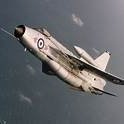



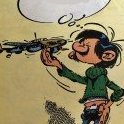

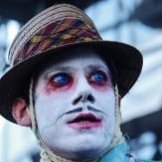

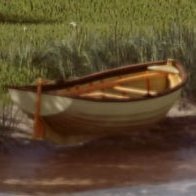

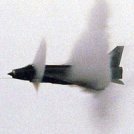
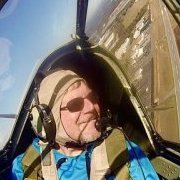
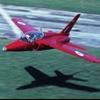
.thumb.jpg.cfc129272ffec824439b15e6013d5952.jpg)

